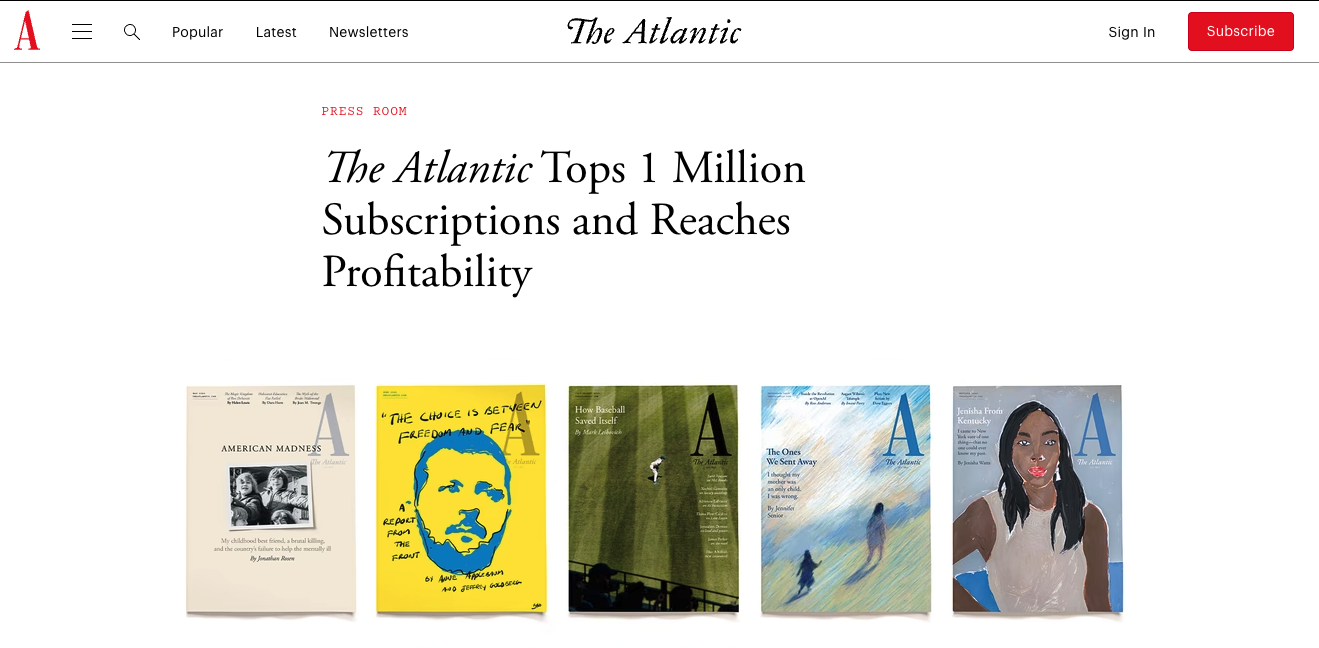
Newsletter
Newsletter
Community can be grounded in a place or an interest, and we review how publisher DC Thomson is using community to drive its growth.
15th September 2023

In the Pugpig weekly media bulletin, Pugpig’s consulting services director Kevin Anderson and digital growth consultant James Kember distill some of the best strategies and tactics that are driving growth in audiences, revenue and innovation at media businesses around the world.
We are working with many publishers to increase engagement to drive membership and subscriptions. If you want to talk about how we can help you, please email us at info@pugpig.com.
By Kevin and James
At Pugpig Consulting, part of our mission statement is: We work with media companies to build great products that develop habit and loyalty leading to membership, subscription and revenue generation. It’s our mission because we see so many publishers adopting this as their strategic focus. They are building enduring relationships with their audiences because it is the basis of resilient publishing businesses. Establishing strong connections with your audience not only leads to increased membership, subscriptions, and event participation but also unlocks exciting avenues for generating additional revenue. At Scottish publisher DC Thomson, this shift is so profound that they are eschewing the term audience and instead talking about building communities around their content.
Lecturer, trainer, writer and friend of the Media Bulletin Adam Tinworth covered DC Thomson’s Ella Dolphin’s talk at the Press Gazette’s Future of Media Technology conference as she outlined how their communities strategy play out across eight verticals:
In the competition for attention that drives engagement and revenue, they see community as a key differentiator. “We’re asking for a transaction: participation and payment. If they know what you’re doing for the community, it’s easier to make that transaction,” said Dolphin, who is the chief executive for DC Thomson’s The Stylist and Beano Studios as well as the group’s Chief Brand Officer.
The question then becomes what community means for DC Thomson across these verticals and how they are executing it. As for execution, they are building a common tech infrastructure across the communities, Adam reports. Like many publishers, they are building data services so that they have a full picture of these communities. Data helps publishers understand the depth of relationships that they have with members of their communities. They are also using services like Viafoura, which provides community and data services for publishers and is one of the third-party content integrations with Pugpig’s Bolt platform. DC Thomson has implemented Viafoura to provide users with personalized notifications and engaging social experiences. This goes beyond interactions with fellow users and extends to their interaction with journalists as well. Viafoura provides automated and human moderation services to allow for civil conversations with registered users and subscribers in DC Thomson’s communities.
Dolphin discussed several case studies to bring to life the approach that DC Thomson is taking across their verticals through four of their titles: The Courier, The Press and Journal, The Stylist and The Beano.
For two of DC Thomson’s local Scottish titles, strengthening their place within their local area is a key way to build a community. The Courier, a newspaper covering the coastal city of Dundee and the surrounding area, has organised events, like local business awards. Meanwhile, The Press and Journal has launched a community fund to support local charities. According to Dolphin, their approach is centred around effectively communicating their efforts and contributions to communities across different verticals. It goes beyond just covering these communities in their newspapers, as they actively participate and engage with them. That can be support for charities and businesses, but the group is also looking for opportunities to use their journalism to support the places where they publish. For instance, they are launching solutions journalism initiatives – offering up solutions rather than simply highlighting problems. By doing this they’re repositioning themselves as an active participant, rather than simply an observer of local life.
Founded as a free magazine in 2009, The Stylist offers subscriptions to their digital editions and newsletters whilst continuing to distribute free print copies in several major UK cities. They’ve also enhanced their positioning as an advocate for all kinds of women. Advocacy by its nature requires a higher level of engagement that would be traditionally expected from a magazine, and they’ve achieved this by organising events such as workshops and talks. They’ve also been keen to highlight allied initiatives. For example, they’re supporting Ada Lovelace Day, which is an event that celebrates women in STEM created and managed by Kevin’s wife, Suw Charman-Anderson
The world has changed dramatically since The Beano was first printed in the 1930s. And it has managed to survive when many similar titles, such as DC Thomson’s The Dandy, have ceased publication. It’s done this more recently by changing with the times. Dolphin explained that the comic now promotes itself as a way to improve literacy amongst children and as a tool to present the fun side of reading. The comics are distributed for free at schools and they have modernised by renaming old characters and introducing a more diverse cast. They also see a commercial opportunity by selling the expertise that they have developed connecting with children through Beano Studios, which provides consulting on Gen Alpha trends.
So how to use the case studies from DC Thomson to build a community in Media? James Evelegh has a few tips in an article for inPublishing where he adds further support to the approach explained by Dolphin. He points to the need for a purpose, as DC Thomson has been doing with The Beano’s focus on education or The Stylist’s approach to advocacy. It also requires proper resourcing and therefore investment. This is essential to ensure that there are enough members of staff to actively engage in the community and to “play the excellent host”. Finally, a community is not a quick fix, it takes time to build up and there’s always a temptation to get distracted by low-quality engagement. To be successful a publisher needs to be prepared to invest time, effort and energy.
Furthermore, based on our extensive experience, it is crucial to carefully select your key performance indicators (KPIs) when implementing any initiative, but this holds even more significance when it comes to community strategies. The question then arises, how do you effectively measure the level of engagement within your community? It is easy to focus on the volume, such as the number of comments. But it might be even more important to track the number of replies so you understand the extent to which you are fostering conversation and not just creating arguments around hot-button issues. Also, DC Thomson has it right in that you cannot have community unless you and your staff are involved. Making sure that their journalists are involved is critical. As James Evelegh says, fostering a community means having excellent hosts, and that might involve training because hosting communities isn’t a skill that editors and journalists typically learn. And monitoring the growth of regular commenters, contributors and attendees is critical. It measures both how your community is growing and how engagement in your community is growing.
Ultimately building communities is a great tool to increase engagement with a media brand to build habit and loyalty. Therefore, the ability to monetise the audiences fits naturally into publishers strategies that are primarily focused on building revenue through subscription models. However, developing a super-engaged audience also opens up other revenue streams that are typically harder to crack. For example, localised advertising, events and memberships all benefit from a community-based approach.
Building a community isn’t a short-term strategy to juice your numbers but a long-term investment to encourage habit and loyalty amongst your audience. It recognises that large numbers of lightly engaged passive users are a challenge to monetise, while building highly engaged community members might take longer but opens up new opportunities for revenue. Just like in any relationship, building strong connections with your communities and implementing effective strategies requires investment. However, numerous publishers have demonstrated how these efforts can lead to the development of robust and resilient publishing companies.
Here are some of the most important headlines about the business of news and publishing as well as strategies and tactics in product management, analytics and audience engagement.

Newsletter

Newsletter

Newsletter

Newsletter

Newsletter